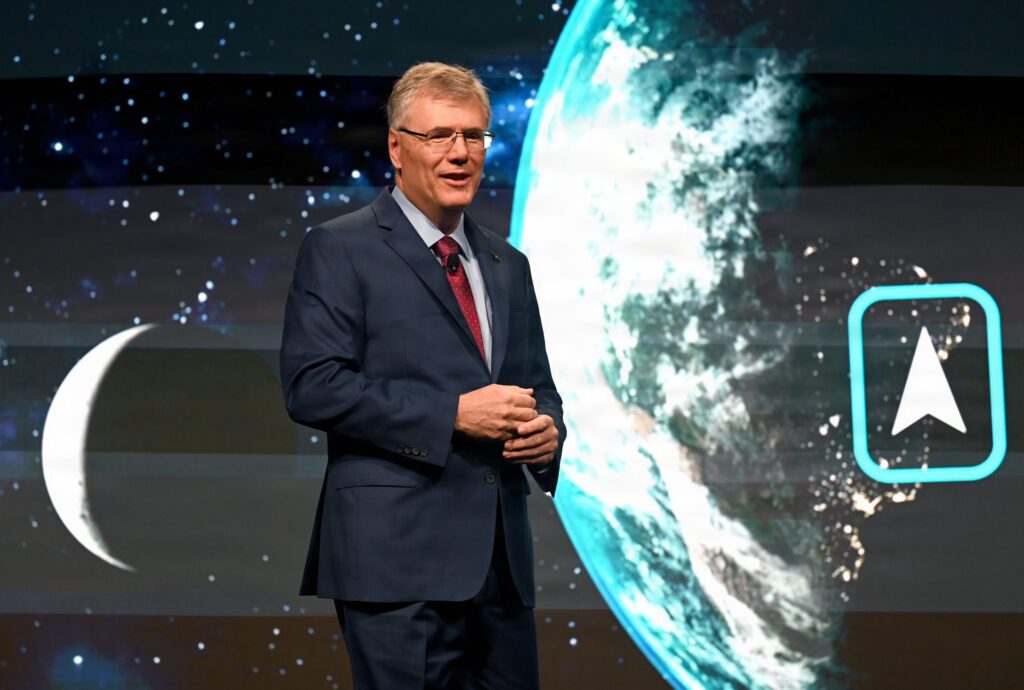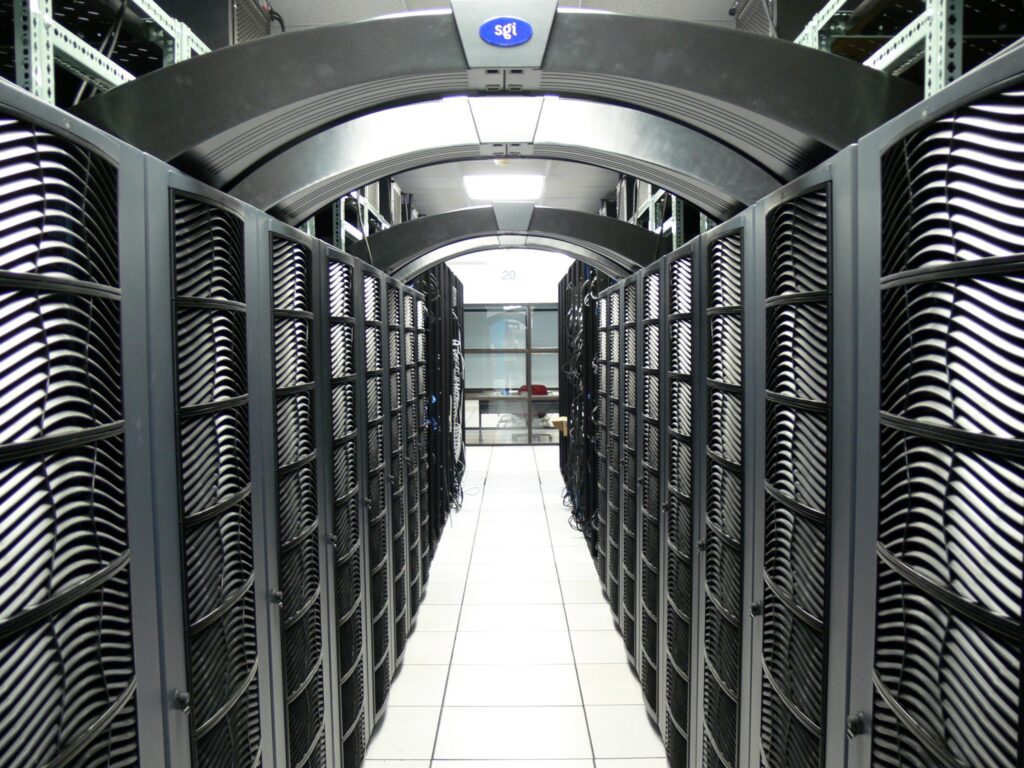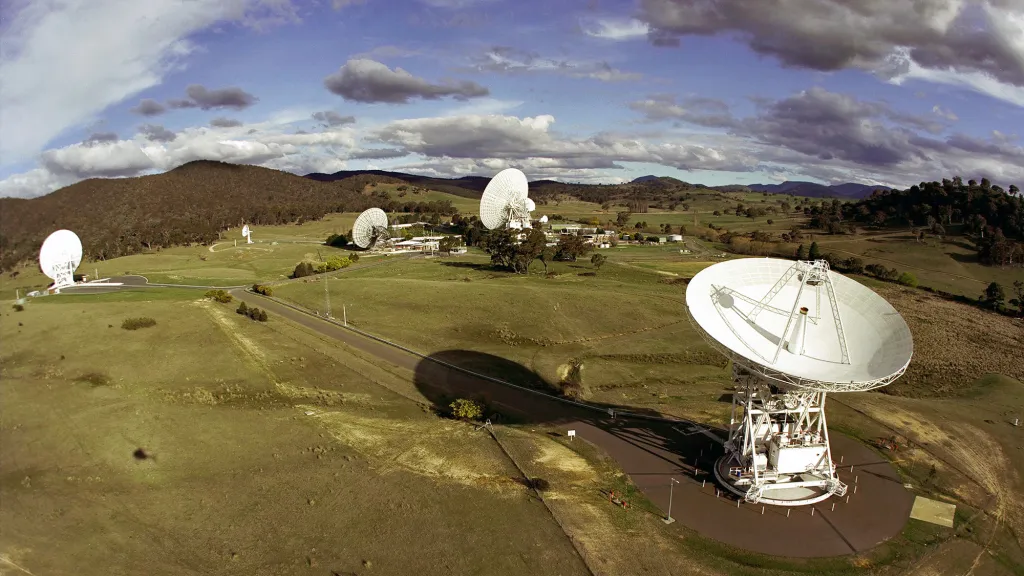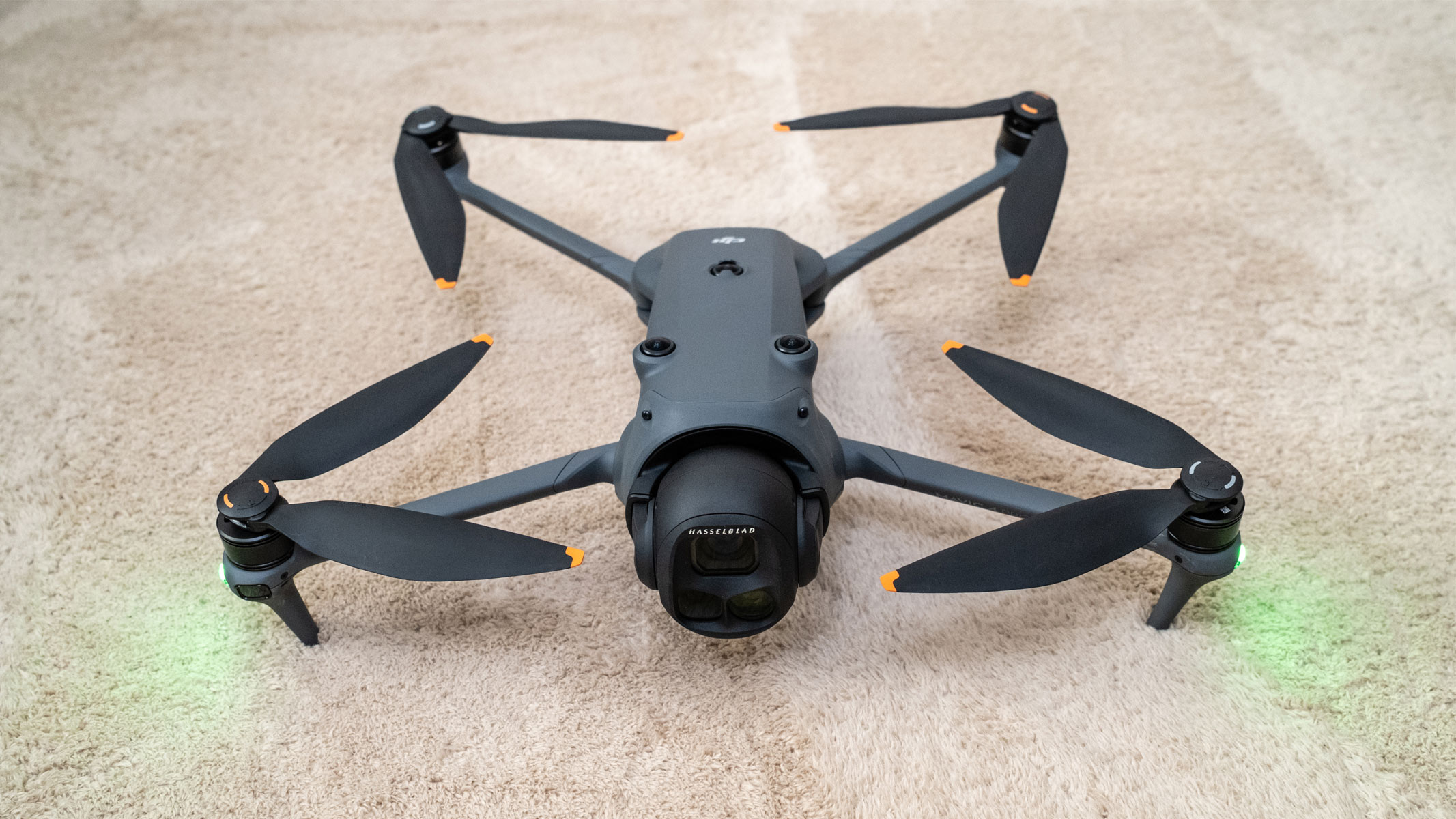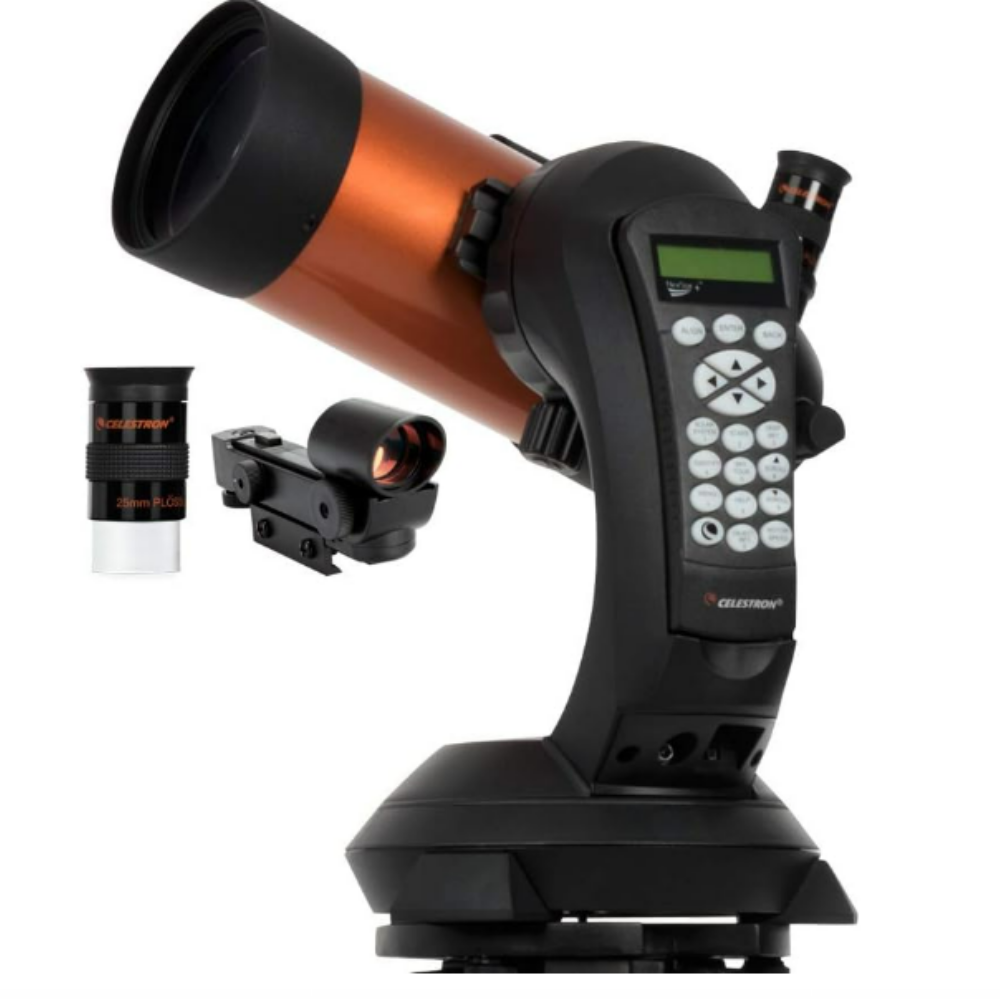Now Reading: Shaking Up Satcom: The Time is Now for Radical Innovation in Satellite Communications
-
01
Shaking Up Satcom: The Time is Now for Radical Innovation in Satellite Communications
Shaking Up Satcom: The Time is Now for Radical Innovation in Satellite Communications

Although their tones and timbres vary, sirens and alarms are universal harbingers of emergency. Mounted in homes and offices; on police cars, ambulances, and fire engines; and in airports, schools, and hospitals, they save precious lives every day with their cacophonous caterwauls that scream for all to hear: “Danger!”
In business and industry, events often occur that are their own kind of alarm. Although they’re not always as obvious or audible as a fire alarm or tornado siren, the warnings they give can be just as consequential. Streaming entertainment, for example, was a siren for the television, video rental, and cable TV industries. Smartphones were an alarm bell for analog photography and landline telephones. E-commerce was a distress signal for the retail sector. And once upon a time, automobiles were warning sounds for carriage makers and blacksmiths.
Disruption from new technologies and business models can’t be stopped. Traditional businesses that hear and heed its warning bells, however, have an opportunity to pivot. Instead of getting hit by the oncoming train, they can get out of its way—and perhaps even climb aboard.

That lesson looms especially large right now for the satellite communications industry, according to Cynthia Harty, senior vice president of corporate development at satellite communications company ST Engineering iDirect. In 2018, she watched intently as Elon Musk’s SpaceX launched two prototypes for its planned constellation of internet-providing satellites, Starlink. The phantom sound of sirens was unmistakable. And with more than 5,000 Starlink satellites in orbit to date, its chime today is only growing louder and more urgent.
“Starlink fundamentally changed the user experience for consumers of satellite internet, and it has caused everyone else in the market to reevaluate what they’re doing and how they’re operating,” explained Harty, who said Amazon’s Project Kuiper—whose goal is increasing global broadband access through a constellation of more than 3,000 satellites—will only disrupt the satcom sector even further. “For all of us in the ecosystem who are not vertically integrated and not funded at the levels of Starlink and Kuiper, we must continue to innovate, but we must innovate better and faster.”
To be clear, satcom already is a high-innovation industry, as evidenced by game-changing advancements like software-defined satellites, multi-orbit capabilities, and optical communication systems. But to avoid stagnation and seize new opportunities, operators, service providers, technology partners, and other stakeholders must band together to quicken the pace of innovation in ways that will maintain satcom’s remarkable record of relevance, growth, and competition. And they must do so immediately.
“When there’s disruption in the market, you can’t just put your head down and pretend it isn’t happening,” Harty said. “You have to figure out how to continue adding value to your customers so they can participate, thrive, and grow into the future.”
The satcom ecosystem can make an especially large impact on customers by concentrating its innovation dollars in three meaningful areas of opportunity: user experience, commercial-off-the-shelf (COTS) products and automation, and 5G non-terrestrial networks (NTNs).
Realizing a ‘frictionless’ future
To appreciate the benefits of large-scale, high-speed innovation, satcom companies must first realize the consequences of inertia. Without material investments in innovation, companies throughout the value chain will stagnate and perhaps even perish, Harty predicts.
“If you don’t innovate, you potentially will be less relevant,” she said. “You could run the risk of having to exit the market because you simply won’t have competitive offerings.”
But innovation isn’t just about business survival. Ultimately, it’s about making vital services better and more reliable for users.
“Our industry for years has talked about reaching the unconnected and bringing more people to the internet, and telco can’t accomplish that without satellite,” Harty continued. “It’s all about frictionless connectivity.”
Imagine, for example, a merchant vessel that’s transporting across oceans precious containers full of raw materials or finished goods. Whether it’s rare earth metals that are critical components in energy infrastructure and electronics, coffee beans for your morning latte, or life-saving pharmaceuticals for pharmacies and hospitals, the global economy depends on their safe and speedy arrival. While threats as diverse as pirates and weather can jeopardize that arrival, they could be more easily avoided and more effectively mitigated with better communications.

Or consider agriculture. With remote sensing platforms, artificial intelligence (AI), and other precision agriculture tools, farmers can increase their yields and grow crops that are more resilient to pests and climate change—if only they had the same connectivity in big fields that exists in big cities.
“If you’re connected to a terrestrial wireless network today, you’ll probably lose connectivity as soon as you stray from a major population center. But in the very near future, you’ll be able to seamlessly roam between satellite and terrestrial networks so that you have connectivity everywhere, from land to sea and from rural to urban areas,” Harty said. “That’s not just an improvement in connectivity. That’s making connectivity available where it was never available before. That’s not incremental innovation. I would call that a ‘leapfrog’ in capability.”
That kind of “leapfrog” in capability can make lives easier and businesses more efficient. In the most urgent contexts, however—warfighters engaged in battle, first responders helping victims during a natural disaster, doctors treating patients in underserved communities, educators teaching impoverished children, non-governmental organizations delivering humanitarian aid—it can be lifesaving.
“Our industry for a long time has been static,” Harty said. “Now that innovation is happening, and happening more quickly, those are the kinds of meaningful use cases where we can make a really positive impact.”
The three aforementioned areas of opportunity—user experience, COTS products and automation, and 5G NTNs—are vehicles through which to achieve that positive impact.
1. User experience: Accessibility is a superpower
From smartphones and cloud computing to drones and AI chatbots, the most meaningful inventions of the modern era are impactful not just because they’re novel, but because they’re easy to use. With that in mind, innovators in the satcom sector must make reimagining the user experience a major priority.
“Bringing the end user onto a satcom network historically required procuring a terminal, shipping it, having it assembled and installed by a professional technician, then provisioning on the network. That cycle typically has been weeks and sometimes months, depending on where the user is located, where the equipment is shipping from, and availability of an installation technician,” Harty observed. “If you look at Starlink, that’s what makes them so different. They asked the right questions about the user’s perspective, such as: How do you procure the terminal? How do you install it? How do you bring it onto the network?”
iDirect is asking the same questions. “Along with some of our key strategic partners, we’re looking at the entire end-user fulfillment chain to explore areas for automation and optimization,” Harty continued. “Can users procure online? Is it possible for fulfillment to happen in distributed warehouses around the world? And once a terminal is physically onsite, how can we make the assembly and installation easier? The goal is ‘zero touch.’ When you receive your terminal and turn it on, we want it to automatically sync to your service provider’s satellite so that you have instant connectivity—zero touch.”
Because it increases access, improves ease of use, and reduces cost, that kind of “zero-touch” experience can be a bigger differentiator in an increasingly competitive marketplace than traditional discriminators like orbit—networks that boast about operating in low-earth orbit (LEO) versus geosynchronous orbit (GEO), for example.
“In order to achieve frictionless connectivity and stage for interoperability with terrestrial networks, we need to provide the best user experience possible by streamlining the procurement, installation, and provisioning of a satellite terminal,” explained Harty, who said ease of adoptability will drive growth for everyone in the satcom ecosystem. “We have to continue focusing our innovation on end-user constraints—the most time-consuming and costly aspects of implementing satcom connectivity. Because the easier you make the technology to adopt, the greater the addressable market becomes.”
For companies that lack vertical integration, enhancing the user experience is a team sport. iDirect is therefore focused heavily on partnerships with suppliers of hardware, software, and applications within the ecosystem.
“There is an urgency for the industry to come together and collaborate across the ecosystem,” asserted Harty, who cited as examples iDirect’s participation in the Digital Intermediate Frequency Interoperability (DIFI) Consortium and the 3rd Generation Partnership Project (3GPP), the outcomes of which will enable software-defined networks and terrestrial/NTN interoperability, respectively. “The sum of all the parts is far greater than what we can each achieve on our own. An example of this is back in 2014 when iDirect, as thought leader, gathered industry feedback on the interface between the modem and the antenna, ultimately establishing a standardized technology protocol, OpenAMIP, that is now used broadly by the industry.”
2. COTS and automation: Accelerating excellence
Also ripe for rapid innovation in satcom are COTS products and automation from AI and machine learning.
“For years, the industry, including iDirect, made purpose-built hardware designed by us and manufactured by us. And we continue to do this, because purpose-built hardware can be optimized for a specific use case,” Harty said. “But at the same time, we have invested in a virtualization strategy that enables migration of network functions to the cloud and COTS hardware. We believe providing options to our customers brings flexibility and scalability that historically did not exist.”
With increased flexibility and scalability comes a faster time to market and, therefore, higher revenue.
“It is about expanding the addressable market for our customers through flexible deployment options that work with their current environment and create for them a path forward, leveraging the latest technology,” Harty continued. “If we can reduce the time and cost of entry for our customer, that will help increase the addressable market for all ecosystem partners in the value chain.”
A similar value proposition exists for automation that exists for COTS. “As networks continue to grow, they become very complex with multiple satellites and orbits. Our customers need the ability to integrate their ground segment solution with their satellite payload, dynamically adjust, spin up and down new carriers and beams, and anticipate potential congestion scenarios,” Harty explained. “By automating as many operational aspects of the network as possible, we can improve the user experience through meeting the service provider service level agreement.”
AI and machine learning have made automation particularly advantageous in areas like troubleshooting and network optimization—predicting problems, preemptively fixing them, and proactively fine-tuning operations in response to changing conditions and dynamic mission needs. “The ultimate goal is executing network processes without human intervention,” noted Harty, who said iDirect already is using AI and machine learning to automatically analyze, predict, and orchestrate network traffic for users of its next-generation ground system, Intuition. “We are on our way to achieving the autonomous satcom network.”

Again, collaboration is critical. iDirect therefore is establishing an Automation Advisory Council as a bi-directional platform for automation knowledge sharing and discovery. “It will consist of a small number of customers, as well as some industry analysts—not only from satcom, but also from the telco industry,” Harty said. “We are at a pivotal point in our innovation where we are assessing the greatest value we can bring to our customers. The intent is to have our customers share their requirements and their ideas as we finalize delivering our first wave of automation applications to market.”
3. 5G NTN: Creating tomorrow’s networks today
NTNs and 5G waveforms are one more area where rapid innovation promises significant returns for the satcom industry as well as for end users.
“Virtualization and cloudification were the last innovation waves, and many of our customers have an implementation plan for those technologies. 5G NTN is what comes next,” declared Harty, who said iDirect is leveraging its Intuition ground segment system to help customers embrace the 5G NTN future. “We’ve got a huge installed base of traditional satcom terminals in the market, so we had to think about how to protect those investments that our customers have made while also facilitating the future, which is 5G NTN. As such, we planned Intuition to support 5G NTN and a method of bringing those traditional satcom terminals into a 5G network, therefore protecting the end user’s investment and enabling our customer to provide a seamless roaming experience.”
Because it’s a practical bridge between yesterday’s investments and tomorrow’s capabilities, that’s the type of innovation that will move the entire marketplace forward, according to Harty. “Beyond traditional satcom terminals, iDirect will bring hybrid terminals that support traditional satcom waveforms and 5G-NR, as well as a 5G UE because we believe our customers will have use cases for all three,” she continued.
Differentiation and competition will survive—and thrive—in the form of software-driven capabilities and application-centric solutions that are tailored to individual customers’ needs. It’s the open, standards-based infrastructure underneath, however, that ultimately will drive change and growth.
“If I am an end user who has a hybrid terminal, I can utilize a traditional satcom network and roam either to a terrestrial network or to a different satcom network through the adoption of current and future standards,” Harty said. “That’s something that 20 years ago no one would have ever believed was possible, because our industry was so proprietary. Now, that proprietary world is breaking down, which brings much more flexibility to our customers to offer additional services to the end user.”
Innovate now—or regret it later
Whether it’s in the form of a new and improved user interface, increased use of the cloud or COTS and automation, or a full-throttled embrace of NTN and 5G waveforms, innovation in satcom will beget even more innovation in satcom. Not only by enabling new technologies, but also by attracting new talent.
“Ten years ago, it was difficult to attract new college graduates to the industry. Now, the space industry is attractive, exciting, and full of innovation and promise—and, I should also mention, cool,” Harty said. “It’s the next generation of engineers that will bring energy, excitement, and fresh, new ideas to keep our industry evolving. And these people want to work with the latest technologies, such as AI and machine learning, just as they did at university.”
From more and happier customers to better, more engaged employees, the benefits of an innovation mindset are as clear as they are numerous. However, the window for realizing those benefits is shrinking. To exploit it, companies must act quickly, urgently, and decisively alongside best-in-breed partners.
“My biggest desire for my colleagues in the satcom industry is for them to step outside of their comfort zone. Don’t fixate on how you used to do things. Instead, think about how you could do things differently,” Harty urged. “That’s hard to do, because you don’t know what’s coming next and the innovations are happening so fast. But you cannot be a bystander and wait. If you do, the opportunity is going to pass you by.”
Stay Informed With the Latest & Most Important News
Previous Post
Next Post
-
 012024 in Review: Highlights from NASA in Silicon Valley
012024 in Review: Highlights from NASA in Silicon Valley -
 02Panasonic Leica Summilux DG 15mm f/1.7 ASPH review
02Panasonic Leica Summilux DG 15mm f/1.7 ASPH review -
 03From Polymerization-Enabled Folding and Assembly to Chemical Evolution: Key Processes for Emergence of Functional Polymers in the Origin of Life
03From Polymerization-Enabled Folding and Assembly to Chemical Evolution: Key Processes for Emergence of Functional Polymers in the Origin of Life -
 04How New NASA, India Earth Satellite NISAR Will See Earth
04How New NASA, India Earth Satellite NISAR Will See Earth -
 05And Thus Begins A New Year For Life On Earth
05And Thus Begins A New Year For Life On Earth -
 06Astronomy Activation Ambassadors: A New Era
06Astronomy Activation Ambassadors: A New Era -
07SpaceX launch surge helps set new global launch record in 2024












